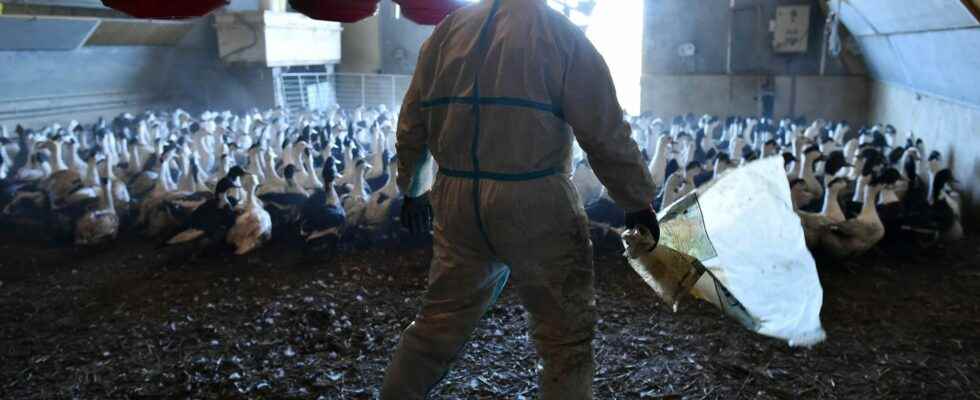The vaccine was the last chance to save French poultry farms from the spread of the avian influenza epidemic, which is hitting the country in extraordinary proportions. However, according to the National Food Safety Agency (ANSES), vaccination of chickens and turkeys will not be possible this winter. The epidemic therefore promises to be long.
Two million poultry were slaughtered in December in a massive plan to try to contain the spread of the virus, the state announced on Thursday (December 22nd). This brings the total slaughter since August 1 to 3.3 million.
H5N1 avian flu is an epizootic that affects all poultry, mainly chickens, turkeys and ducks. The first case appeared in France via wildlife, on a duck found dead in Ain in 2006. A few months later, the virus spread to a farm of 11,000 turkeys in the same department. Since then, the outbreaks have multiplied each winter, and the virus has continued to gain momentum thanks to increasingly virulent strains.
The 2022 epidemic characterized by an unprecedented “viral mosaic”
But this winter of 2022 marks the year when the disease became “endemic”, according to many professionals. France is one of the most affected countries in Europe, in particular on its Atlantic coast which is located on the route of migratory birds, often carriers of the disease. According to Jean-Luc Guérin, professor of avian pathology at the National Veterinary School of Toulouse and laboratory director at Inrae, Europe is facing this year a “viral mosaic” of new variants, which is particularly difficult to control.
To prevent the disease from devastating farms as in 2021 (21 million poultry slaughtered), a general confinement order for poultry was launched on November 10. Since the beginning of the month, crawl spaces have been decreed in many farms in Vendée, Deux-Sèvres and Maine-et-Loire.
In 2022, the epidemic broke out early, in the summer. “The wild birds residing on our territory, which are not migratory, apparently kept the virus alive throughout the summer”, explains Jean-Luc Guérin.
Vaccine stocks too low at the global level
Faced with this unprecedented phenomenon, sheltering measures do not seem to be enough, and the arrival of the vaccine was particularly awaited among breeders. But according to ANSES, a vaccination campaign is impossible immediately. “Of the five vaccines currently available in the world, only one has a marketing authorization in Europe for chickens”, underlines the national agency. But “a vaccination campaign would not be effective without including ducks, for which there are no vaccines yet”, authorized in France, she recalls. Ducks are among the species most susceptible to the virus.
In any case, “the low stocks available for all existing vaccines mean that several months would be needed to produce enough doses to vaccinate farms”, adds ANSES. The world production of vaccines against avian influenza is for the moment reserved in priority for countries where the disease is established durably, and within the European Union, vaccination is for the moment only authorized to save rare species. kept in zoos.
The urgency of developing a vaccine strategy
In response to increasingly virulent epidemics, ANSES calls for “the definition of a global vaccine strategy”, which must go “through reflection with manufacturers to develop and produce effective vaccines for all species of poultry “, she explains in her press release.
Thursday, December 22, the French Ministry of Agriculture announced its objective to launch the first vaccination of poultry against avian flu in the fall of 2023, hoping to have a sufficiently effective vaccine by then. For this, the vaccines must be the subject of an authorization request, to the National Agency for Veterinary Medicinal Products for authorization in France, or to the European Medicines Agency for authorization throughout the European Union. .
